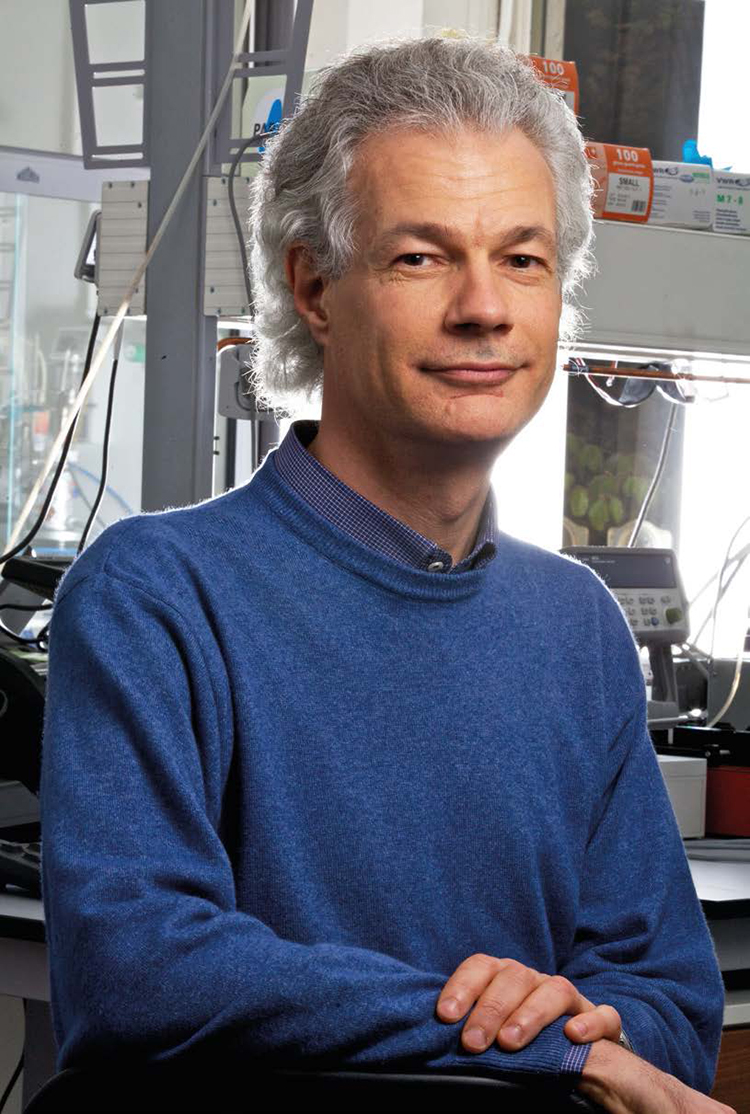
The area of Turin known as “Innovation Mile”, between the Po and Dora Riparia rivers, is home to a large number of innovative companies and technological institutes. The newest addition, joining the likes of the Politecnico, the Boella Institute and the Officine Grandi Riparazioni, is the Centre for Sustainable Future Technologies (CSFT), a branch of the Italian Institute of Technology. It was inaugurated in October in the Environment Park green-business hub, occupying a 1,000m2 lab space modelled on the most advanced, state-of-the-art research facilities on an international level. Desks and workstations face each other, favouring interaction and collaboration to maximise interdisciplinary approaches and synergy among different skillsets. All of this is in pursuit of a shared macro-objective: the sustainability of the future’s economic models. A sustainability that necessarily entails the reduction of carbon emissions, but must also focus on capturing, recovering and valorising CO2. This will be essential for as long as human activity is based primarily around the process of combustion, a timeframe which the International Energy Agency’s World Energy Outlook report predicts will extend far into the future.
We spoke about this with Fabrizio Pirri, solid-state physicist and director of the new Turin based branch of the Italian Institute of Technology.
How was the Centre for Sustainable Future Technologies born?
“In 2015, the Italian Institute of Technology (IIT), based in Genoa, was restructuring its scientific plan, which happens every five years. The restructure allows it to redirect efforts and update research projects on the basis of the most recent scientific developments that have emerged on the global stage. Because Turin is at the cutting edge in the fields of green chemistry and circular economy, I proposed to redirect the existing centre to address these themes. At the same time, the Environment Park offered us spaces to develop new laboratories that were better suited to our needs. Thus, together with Guido Saracco, who is now the Dean of the Politecnico di Torino, we designed the spaces and recruited researchers (27 in total, with the addition of 18 doctoral students as well as collaborations with researchers affiliated with the Politecnico).”
What research areas are you focusing on?
“The theme of sustainability has been divided into three strands: reduction of anthropogenic CO2; resource and energy efficiency; and the circular economy, which sees CO2 as industrial waste that can be reconverted into a usable raw material. To reach these objectives, our researchers are working on the development of nano-structured materials on the one hand, and on the other they are studying processes for the recovery and transformation of CO2 into fuels (such as methane) or polymeric materials, preferably biodegradable ones. In terms of inorganic nano-structured materials, we are researching types that are adapted for the catalysis of CO2 and its ‘capture’ when it is expelled during industrial processes.”
Can you give us some examples of the materials in question? Furthermore, how can this process be made more efficient?
“Various metallic oxides are being tested, such as copper, tin or zinc oxides. To trigger the reaction with CO2 a certain amount of energy is required, ideally generated from renewable sources, such as solar energy. The goal of the research and of the tests that have been performed is to obtain reagents that require as little energy as possible to generate a positive result. Therefore, on one side we are trying to diminish the energy needed to set off the catalysis, and on the other to optimise the area impacted by the reaction, so as to reduce material waste. We are also testing the lifespan of the oxides being used, which, in any case, once they are no longer useful as catalysts, can be repurposed without an environmental impact.”
There is also the question of energy storage, which is crucial in terms of the future of clean energy sources. Your research into inorganic materials also focuses on this theme…
“Exactly. Batteries in use today are made with rare materials that are also pollutants, such as lithium. If, for example, we were to drive towards an exponential growth in the use of electric vehicles, this type of battery wouldn’t make sense from the point of view of sustainability. Therefore, our objective is to develop less expensive and less polluting materials that could provide an alternative to today’s batteries. They are the so-called supercapacitors, and they are often carbon-based, such as graphene.”
In a second lab, which is still under construction, you will focus on synthetic biology…
“Yes, and it will still be within the remit of CO2 valorisation processes: we will be synthesising bacteria analogous to those which, in the primordial era of life, produced the earth’s atmosphere. That is, they were able to digest carbon dioxide and create methane and other polymers. The practical result will be the production of plants where flows of CO2 will be processed to create valuable raw materials that can be reintroduced into the productive cycle.”
What does the ReCode project, which you are working on with the support of the EU, entail?
“The focus of the project is to recover CO2 released during the production of cement, and to transform it into additives that improve the performance of the cement itself. The initial assumption is a basic one: a significant proportion of solid materials is made of carbonates (derived from carbonic acid). The project’s aim is to capture carbon dioxide before it enters the atmosphere, and to use it to synthesise carbonates that will be added to the cement.
Cement plants are among the largest producers of CO2 in the industrial sector. Therefore, taking this starting point also has a symbolic value. For the time being, the project is in its testing phases in the labs of Turin, but we are already working on the installation of a pilot system at the Titan cement plant, in Athens, which will allow us to verify the effectiveness of the process and will be the first step in the upcoming industrialisation. The reactor will be right beside the main plant, so that emitted CO2 can be immediately turned into carbonate and re-used on location by the same cement plant, in a zero-km system. Ideally, a reactor of this type could be used not only for cement plants, but for any industrial process.”
Fatih Birol, Executive Director of the International Energy Agency, commented in the latest World Energy Outlook report, that renewable energy on its own is not enough to reach climate objectives: we have to become more efficient in the “capture, stockpiling and use of carbon.” What do you think about this?
“I can’t help but agree. The largest portion of emissions caused by industrial processes cannot be simply stopped. The only possibility, therefore, is to block the release into the atmosphere of CO2 that is generated by industrial processes. The optimal solution at this moment in time is to find a balanced combination of sources that can satisfy the world’s energy requirements. And to learn to recover, recycle and valorise the by-products of combustion, that will continue to exist.”
Centre for Sustainable Future Technologies, www.iit.it/it/component/content/article/542-club-alpino-italiano-environment-protection
World Energy Outlook, www.iea.org/weo


